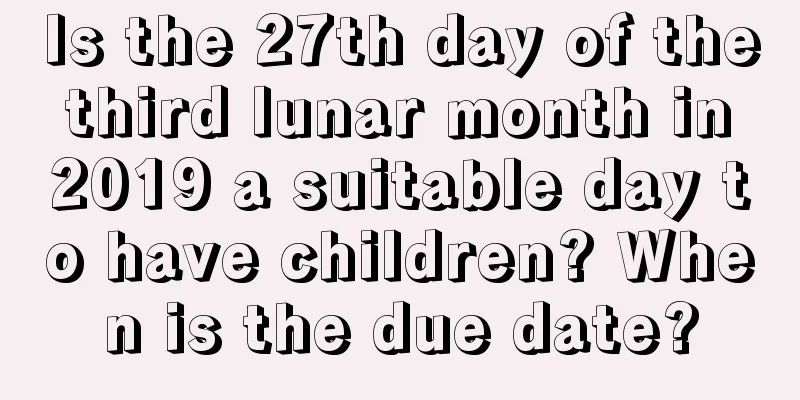What is the Feng Shui of Xunlong Jue? Explain Xunlong Jue for you

|
Introduction: Since its release, the movie "Ghost Blows Out the Light: Mojin: The Lost Tomb" has been a box office success, triggering a wave of movie-watching. At the same time, it also triggered heated discussions on the topic of "finding dragon points". Here, what Mr. Zeng Yihua wants to say is that, that is film art, while finding dragon points is a profound Feng Shui academic discipline. Art has ignited people's yearning and passion for Feng Shui, but studying Feng Shui academic discipline requires an indifferent heart, a strong interest and a persistent spirit of practice. Feng Shui terminology is important knowledge in Feng Shui. Let’s take a look at it below. The ancients said: wealth and honor come from the dragon. In other words, whether or not it can eventually form a cave depends mainly on the dragon. However, the mountains, rivers and streams have various shapes and endless changes. When we walk into the vast mountains, we can't help but feel confused and inevitably have a feeling, "I can't know the true face of Mount Lu because I am in this mountain." The terrain of mountains and rivers is ever-changing and their shapes resemble dragons, so the ancient sages used dragons as a metaphor and title. But not all mountains can be called dragon veins. Personally, I think only mountains with vitality can be called dragon veins. What does it mean to have vitality? There must be water and changes. "Fa-Hui" says: If a dragon has no transmission, change, or penetration, then it has no destiny. If it is not removed, it will not look elegant. Although it has the momentum of running and the shape of swinging, it is also a false dragon. Most of them are the mountains of slaves, so there is no need to look for a cave. Even if there is a tangible cave, dragon and tiger, case opposite, and bright hall, and all other legal conditions are met, the dragon is not removed, not changed, the qi is incomplete, the pulse is not true, and there is only murderous aura and evil, which is a fake place. Therefore, when looking for dragon veins, if you see whether the mountain range has undergone gorge changes, you can determine whether it is a dragon or not. To examine a dragon, one must observe it from multiple angles. The first is the changes of the dragon, such as opening the tent, peeling, passing the gorge, and escorting; the second is the characteristics of the dragon vein itself, such as the dragon's side, straightness, oldness, length, front and back, true or false, noble or humble, and residual energy. There is a lot of content, but due to limited space, the focus here is on explaining how to identify the trend of dragon veins. When we are among the mountains, we must first calm our mind. Only with tranquility can we go far and only with a calm mind can we observe details. Step one: look at the water.Mountains and water have the same source. Water flows from high to low, and the general trend of mountains also starts from high and gradually descends. There is a river between two mountains, and there is a mountain between the two rivers. From this we can know that when water comes, the dragon vein comes, and when the water goes, the dragon vein also goes. In the plains, because the mountains are not obvious, we should pay more attention to observing the direction of water flow in order to determine the direction of the dragon vein. Step 2: The age of the dragon's body.The dragon's bones are made of stone, its flesh is made of soil, and its hair is made of trees and grass. So a mountain with a lot of exposed stone, rugged and abrupt, and looking ugly and weird is an old dragon. Conversely, a mountain with more soil and fewer stones, and with lush vegetation and a beautiful feeling is a young dragon. From this we can see that the old dragon is the source of the dragon, and the young dragon is the direction of the dragon's departure. Step 3: The height of the mountain.According to common sense, from high to low, high mountains are the incoming dragon, and low mountains are the outgoing dragon. However, this method is only applicable to a large range, and sometimes it may be inaccurate in a small range, so it can only be used as an auxiliary reference method. Step 4: Spacing between peaks.Closely spaced ones represent where the dragon is coming from, and wide spaced ones represent where the dragon is going. Step 5: The five elements attributes of the mountain.The pointed one represents fire, the straight one represents wood, the round one represents metal, the curved one represents water, and the square one represents earth. Generally speaking, wood and fire type peaks are where the dragon comes from, while earth, metal and water type peaks are where the dragon goes. Summary: As long as we combine and use the above five methods flexibly, we will have a clear understanding of the dragon's trend. Feng Shui actually talks about the principles of nature. Just like humans, it is difficult for people to have children when they get old, so old dragons usually cannot form a burial site. Therefore, when we look for dragons, we have to look for young dragons, as only young dragons have hope of forming a burial site. To bury is to take advantage of the vitality! The vitality has the characteristics of dispersing with the wind and stopping at the water boundary. You can follow the above-mentioned method of finding dragons and search step by step. When you reach a place surrounded by mountains and water, it means that the dragon-finding site is close at hand. |
<<: There are four major evil spirits in Feng Shui:
>>: Interpretation of Yin-Yang Theory and How to Improve Feng Shui
Recommend
List of auspicious days for burning incense and praying in the Lanyue of the seventh lunar month in 2019!
Introduction: In our country’s traditional culture...
What day is Mid-Autumn Festival in 2017? What does the Mid-Autumn Festival commemorate?
Introduction: In the long river of every year, the...
Is it a good idea to give birth to a baby boy on the 14th day of the 11th lunar month in 2017? How auspicious or inauspicious is the time?
Every day has its own unique meaning and connotati...
Where is the God of Wealth on the 13th day of the sixth lunar month in 2018?
The sixth month of the lunar calendar is approach...
Is it a good idea to get married on Bailu Day in 2022? How to decorate the wedding scene to be auspicious?
Although affected by the epidemic, it is difficult...
Is it a good idea to get married on Qingming Festival in 2018? Are the days around Qingming Festival suitable for getting married?
In daily life, Qingming Festival is a very common ...
Analysis of the auspicious and inauspicious times of the 21st day of the fifth lunar month in 2020
Analysis of the auspicious and inauspicious times...
What can we do during the Mid-Autumn Festival? What are the taboos?
The Mid-Autumn Festival comes every year, and peop...
Is it okay to get engaged on the summer solstice, May 19, 2019 in the lunar calendar? What time is the summer solstice in 2019?
Introduction: Marriage is an important event, and ...
What will happen if you get married in the Ghost Month of the seventh lunar month? Is it not possible to get married or engaged in the seventh lunar month?
According to the older generation, the seventh mon...
What is the lunar calendar for the fifth day of the twelfth lunar month in 2021? Is it suitable for moving to a new home?
The twelfth lunar month is at the end of the year,...
How about the 20th day of the fifth lunar month in 2021? Can I make a bed?
There are certain rules and regulations for settin...
Is the fourth day of the eleventh lunar month in 2018 a good day for funerals?
"The Book of Rites: Monthly Ordinances" ...
Is it okay to hold a funeral on the 10th day of the third lunar month in 2019?
When attending a funeral, one should show a deep e...
When is the White Dew solar term in 2018? How many days will it last?
Introduction: Bailu is one of the 24 solar terms, ...









